6 Best Wall Sit Variations (with Pictures!)
The wall sit is a classic static exercise best known for its sheer difficulty when performed for extended periods of time.
Although the wall sit is quite popular in its own right, a number of different variations have popped up over time - each of which address a training need that the regular wall sit doesn’t quite fulfill.
While there’s no disputing that the standard wall sit is the best variation for building lower body endurance, exercises like the stability ball wall sit or single leg wall sit both challenge the muscles in a unique way. Athletes seeking a change in their workout may wish to try them out.
What are Wall Sits?
Wall sits are classified as a traditionally bodyweight isometric lower body exercise performed so as to build endurance and stability throughout the core and legs - or otherwise as a physical diagnosis tool.
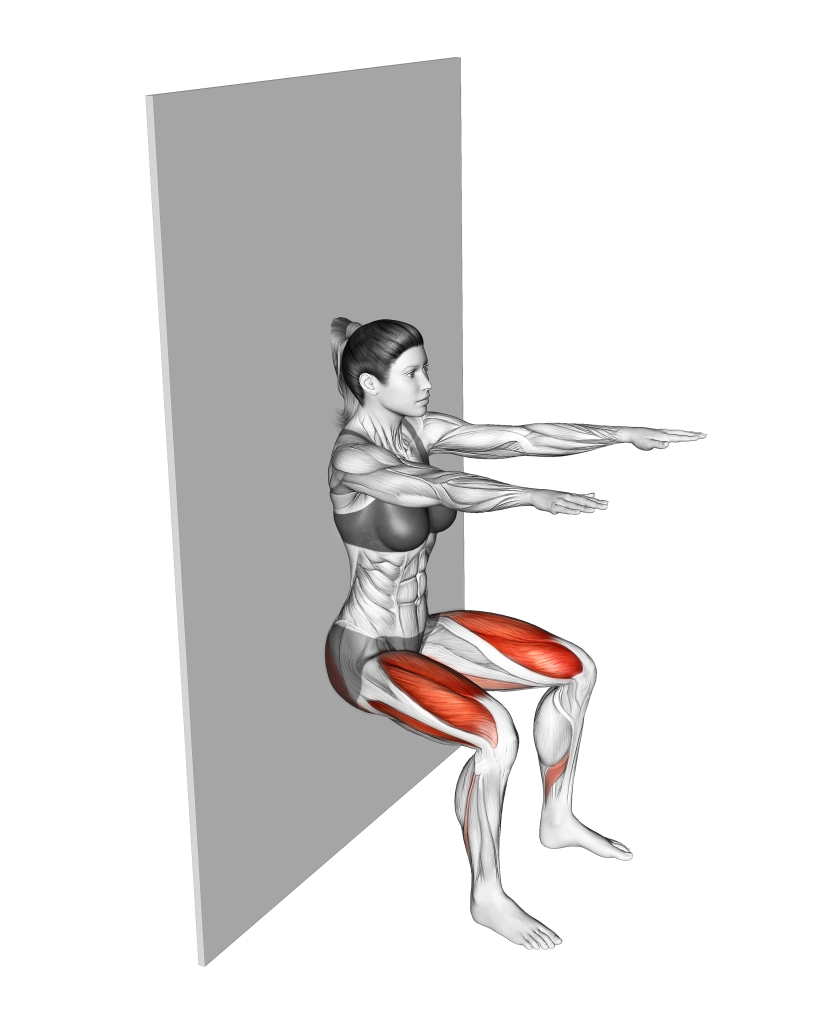
Wall sits are rarely used as the main form of lower body training stimulus, as isometric contraction has been shown to be inferior to dynamic contraction in terms of hypertrophy and active force output.
The majority of wall sit variations simply change the position of the legs and feet in relation to the body. The core aspect of the exercise (back against a wall) remains much the same, regardless of variation.
In addition - although it will depend on which specific variant - wall sit variations will largely target the quadriceps, core and the muscles of the lower posterior chain.
A Note on Weighted Variations
Although dumbbell or front barbell loaded wall sits are indeed possible, these exercises are largely identical to the conventional wall sit. For the sake of concision, we’ve neglected to mention these.
This doesn’t mean that you can’t load any of the following exercises with dumbbells in your hand, though. Feel free to do so if you are sufficiently experienced.
Wall Sit Variations
1. The Standard Wall Sit
The conventional form of wall sit involves the performer sitting against a wall and utilizing abdominal contraction to press the lower back flat against it.
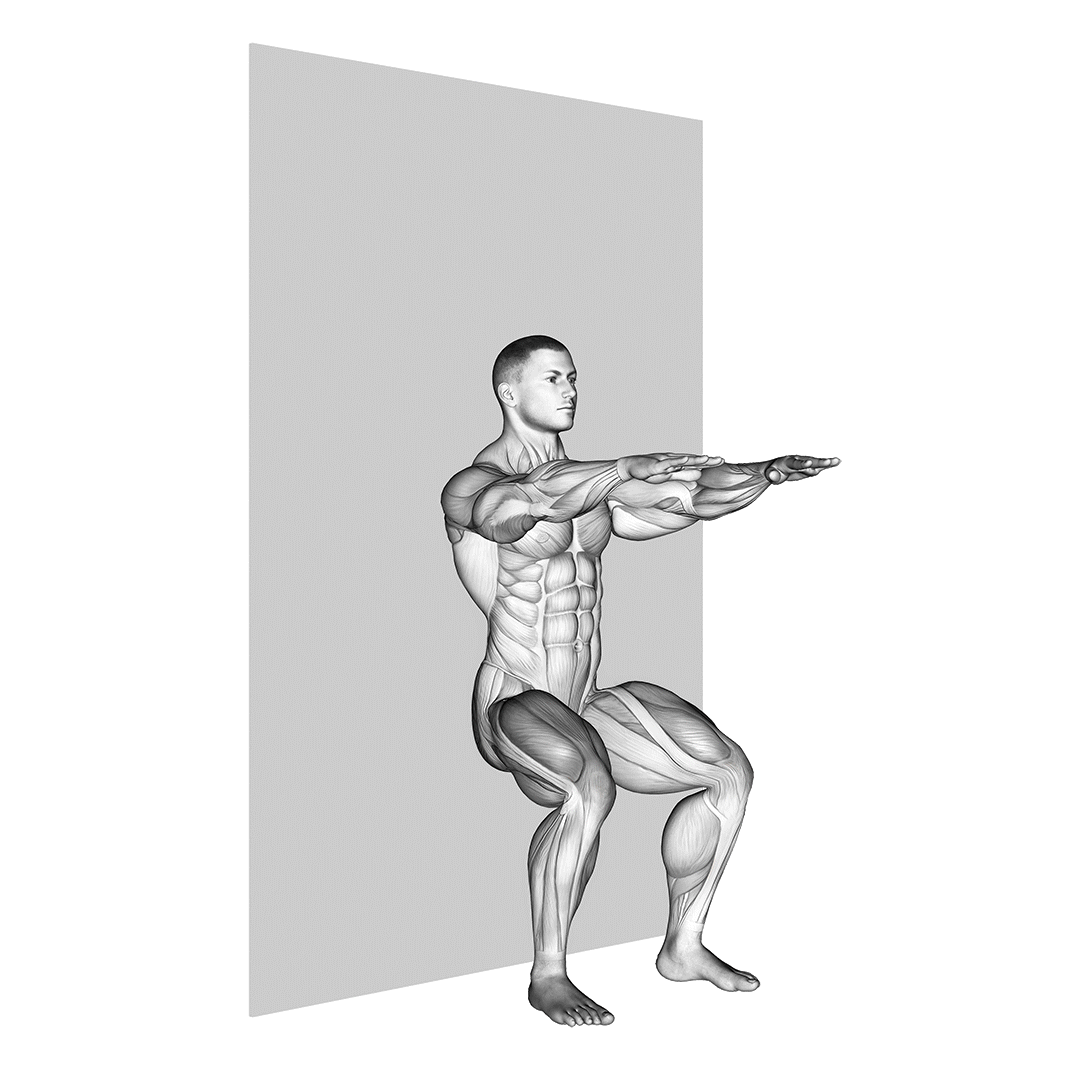
Like most other variations, this requires the legs and core muscles to work in a static manner - meaning that the muscles do not significantly lengthen or shorten.
Standard wall sits are used as either a warm-up, a finishing exercise at the end of a workout or as part of a training program geared towards building stability and isometric strength.
Leg Muscles Worked
The standard wall sit primarily recruits the quadriceps and the muscles of the core.
To a lesser extent (and depending on hip flexion angle), the hamstrings and glutes are also targeted.
Benefits as a Wall Sit Variation
The main benefit of regular wall sits is its simplicity.
Because no significant dynamic contraction or advanced technique is involved, even the most novice of exercisers can improve their stability and strength through the wall sit - risk of injury virtually zero.
Even discounting the wall sit’s simplicity, few exercises can challenge seasoned athletes as much as a wall sit performed for an extended period. Isometric contraction is so rarely trained in modern programs that including it into a workout session is almost guaranteed to enhance performance in certain metrics.
How-to:
To perform a wall sit, the exerciser will sit against a wall by bending at the knees, setting the feet shoulder-width apart and pressing the back of their glutes against the wall.
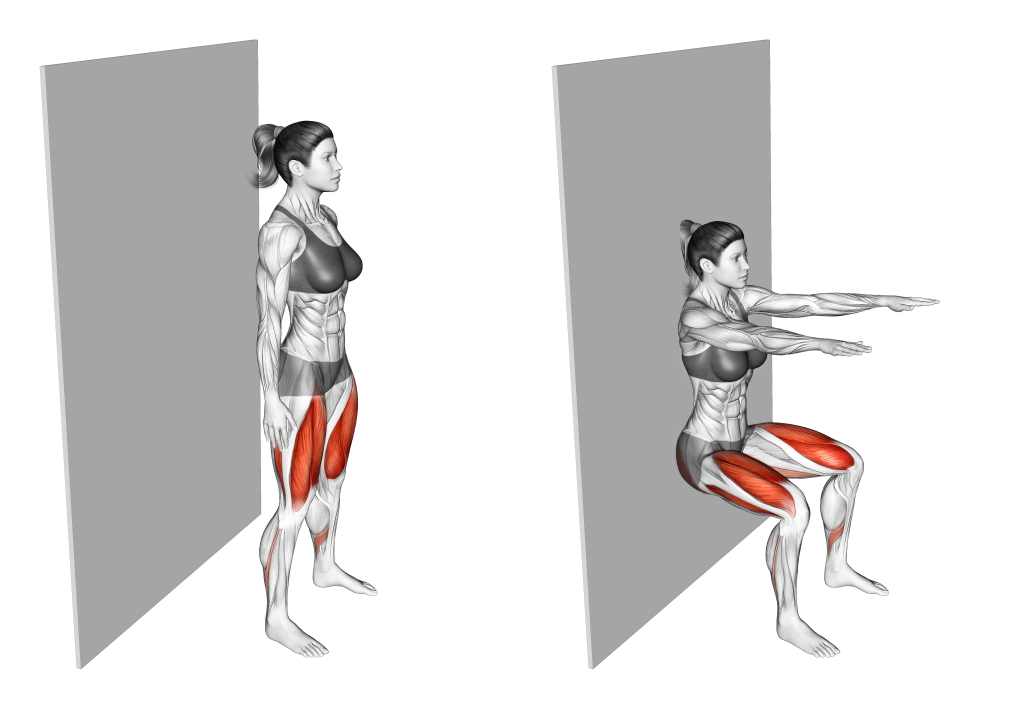
A sitting height where the thighs are parallel to the floor is the usual stance, but exercisers wishing to emphasize their glutes and hamstrings may squat further down.
Regardless, once seated against the wall, the exerciser then braces their core and presses their lower back into the wall. This both generates friction to prevent sliding down, as well as properly engages the entire core muscle group.
With the back and glutes flush against the wall, the exerciser then maintains this position for a predetermined length of time before standing back up to complete the repetition.
2. The Narrow Stance Wall Sit
Exactly as it sounds; narrow stance wall sits are simply conventional wall sits performed with the feet closer than shoulder-width apart.
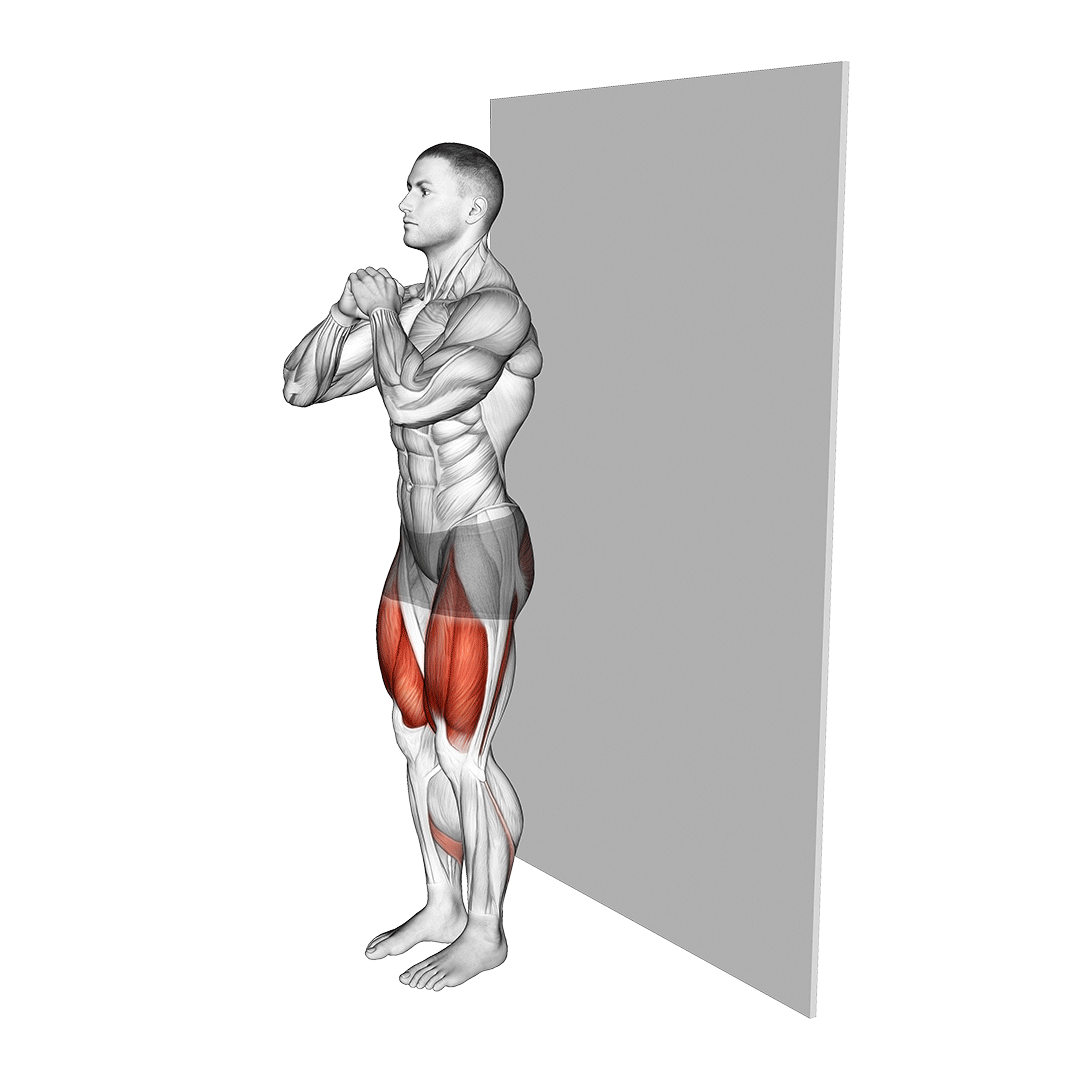
Positioning the feet in this way creates a greater emphasis on the quadriceps femoris - but nonetheless still challenges all muscles to a greater degree as stabilization with a narrow stance is more difficult.
Apart from a change in stance, this variation of wall sit is much the same as its conventional counterpart and may be performed in the exact same way.
Leg Muscles Worked
Narrow stance wall sits emphasize the quadriceps and core muscles while targeting the glutes and hamstrings to a comparatively lesser degree.
Benefits as a Wall Sit Variation
As touched upon, the narrow stance wall sit creates a greater emphasis on the quadriceps as the posterior chain is worked to a lesser degree.
Individuals with poor quadriceps stability or those that wish to improve explosiveness during a back squat can both benefit from performing wall sits in this manner.
How-to:
The narrow stance wall sit is performed exactly the same as a conventional wall sit, only with the feet narrower than shoulder-width apart.

To do so, the exerciser will sit against a wall by pressing their glutes against it and bending at the knees, creating enough distance with their feet to stretch out the thighs so they are parallel to the floor. The feet themselves should be less than shoulder-width apart, accounting for comfort.
From this stance, the exerciser then pulls their navel towards the wall, flattening their back against it and bracing their core. Hold for as long as intended.
3. The Heel Raised Wall Sit
Occasionally, exercisers wishing to perform the wall sit will have trouble due to poor ankle mobility.
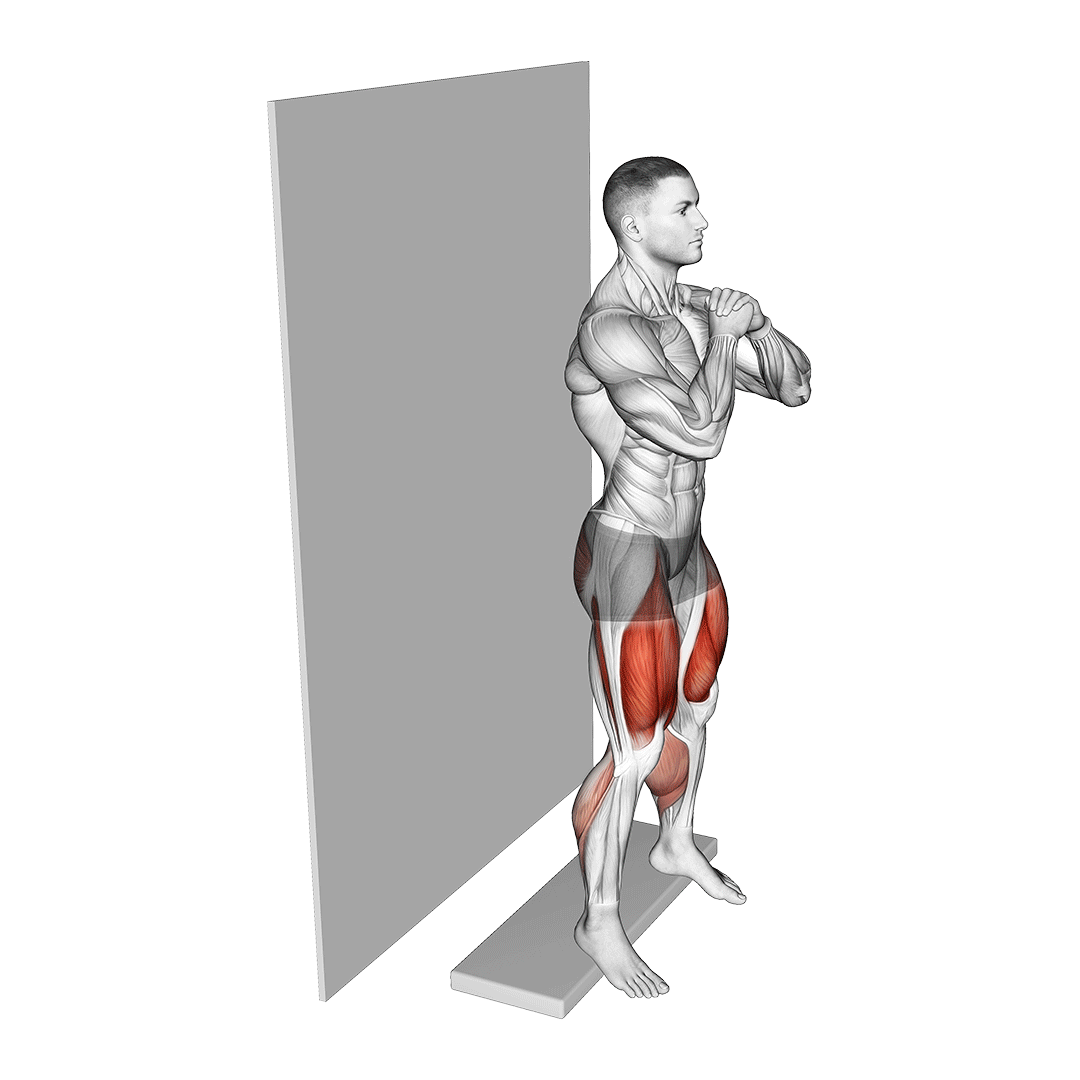
This can be solved by simply elevating the heels atop a wedge or weight plate - either of which reduce the length in which the back of the ankle must stretch.
Apart from being more mobility-friendly, the heel raised wall sit can also be used to increase quadriceps recruitment due to the somewhat more forward position of the knee joint.
Leg Muscles Worked
Heel raised wall sits target the quadriceps to a slightly greater degree than regular wall sits, but otherwise work much the same muscles to a similar capacity. The core, glutes and hamstrings are all used in an identical manner.
Benefits as a Wall Sit Variation
As mentioned previously, individuals who find that their heels come off the ground during a wall sit will find that placing support beneath the heel alleviates this issue.
Alternatively, raising the heels in this manner also improves quadriceps recruitment as the knee is further forwards, lengthening certain sections of the muscle group.
How-to:
Performing the heel raised wall sit is practically the same as a regular wall sit, only with a more forward knee tracking.
To do so, place a weight plate or pair of wedges about one step away from a wall, standing with the heels atop it and the forefeet on the ground.
Then, the exerciser sits back and presses their glutes against the wall, bracing their core and flattening their lower back against it as well. The knees should be bent, with the thighs parallel or almost parallel to the floor, depending on knee and hip mobility.
Hold this position for the predetermined length of time.
4. The Single Leg Wall Sit
The single leg wall sit is a unilateral variation of wall sit that greatly magnifies the intensity of the exercise, as the entirety of the body’s weight is placed on only one leg at a time.
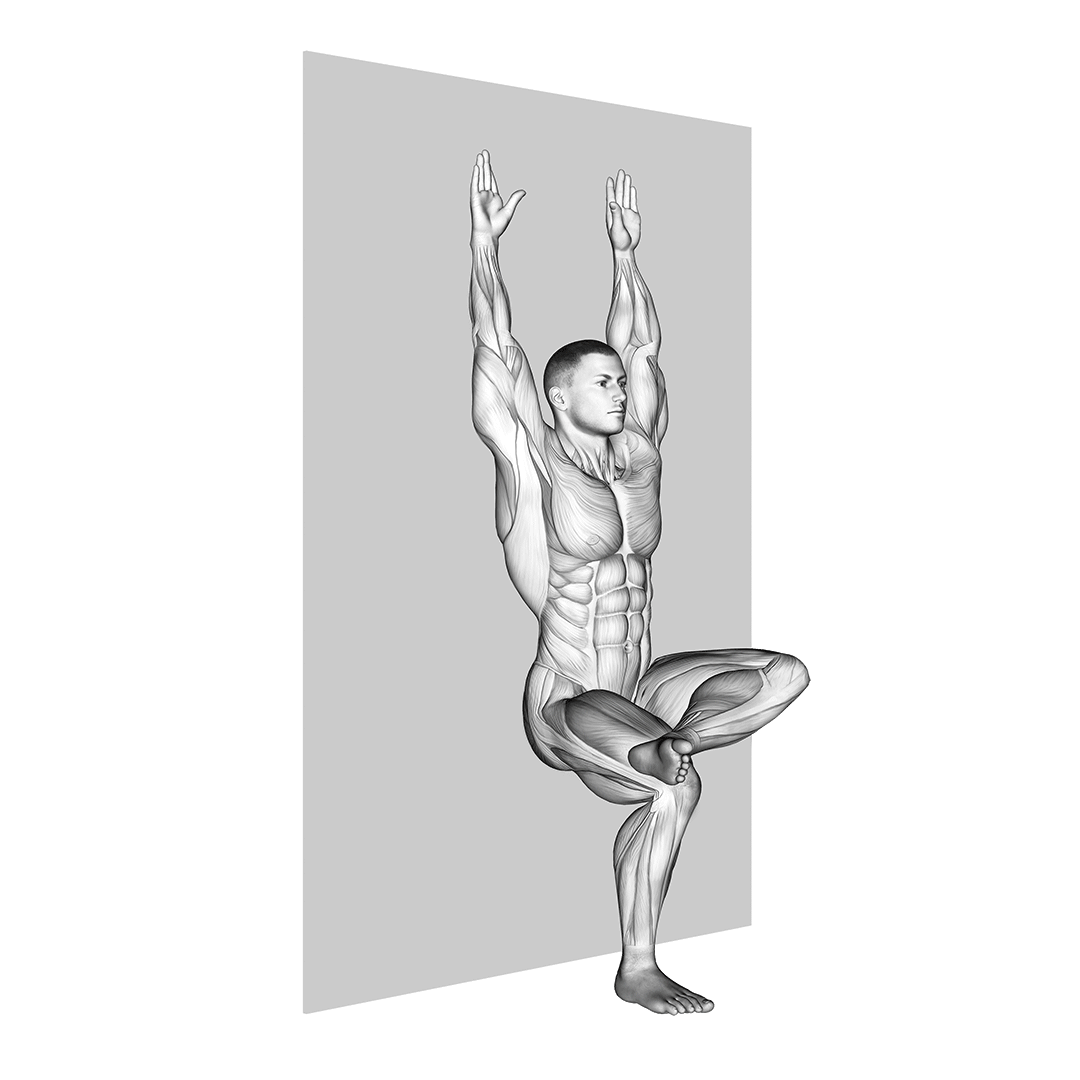
Being a unilateral exercise, not only will the muscles be forced to work against a greater level of resistance, but stability demands will also be significantly magnified as well. It is advisable to only perform single leg wall sits once you can hold a wall sit for over a minute.
Leg Muscles Worked
Single leg wall sits recruit the same muscles as two-legged wall sits, only with a somewhat greater emphasis on the calves due to the increased unilateral stability demands.
This means that the core, quadriceps, glutes and hamstrings are all targeted by the single leg variation as much as the bilateral variation.
Benefits as a Wall Sit Variation
Unilateral exercises are performed either as a form of progression or as a method of focusing on only one side of the body at a time. Whether this is to elicit greater muscular contraction or correct an imbalance, the concept remains much the same.
In the case of unilateral wall sits, the difficulty in balance can be partially alleviated by simply extending one leg forwards, rather than only raising the foot off the ground.
This makes the exercise even more accessible for individuals who can perform the exercise but have trouble maintaining their position.
How-to:
To perform a single leg wall sit, the exerciser will first begin by sitting against a wall with both legs, spreading their arms out for support and keeping the feet narrower than shoulder-width. As always, the lower back should be pressed against the wall so as to contract the core better.
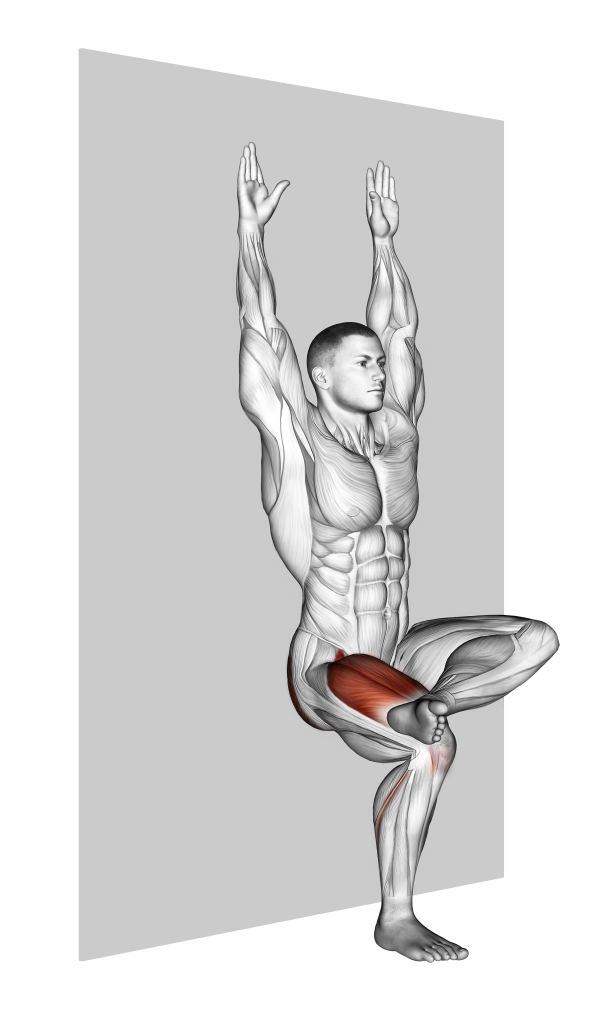
From this stance, the exerciser then raises one foot off the ground, either extending it forwards at the knee for balance or simply keeping this one foot raised.
Hold this one-legged position for a predetermined length of time. Don’t forget to repeat with the opposite leg as well.
5. The Goblet Wall Sit
A “goblet” exercise is simply a weighted exercise with a dumbbell or kettlebell held at chest height in both hands, producing a goblet-like grip as the palms are facing each other.

In the case of wall sits, this not only creates the opportunity for loading the exercise with free weights - but also allows for greater core and quadriceps contraction to be created, as the anterior loading will force these muscles to work harder to compensate.
Goblet wall sits are preferable to front-rack barbell wall sits or dumbbell wall sits as they allow for an easier time balancing and maintaining proper form. Barbell wall sits especially can make setting the scapula against the wall difficult due to the position of the bar at the front of the torso.
Leg Muscles Worked
Goblet wall sits target the abdominals and quadriceps to a slightly greater degree, but nonetheless also work the glutes, hamstrings and remaining core muscles in a similar manner to regular wall sits.
Benefits as a Wall Sit Variation
As touched upon in the previous section, performing wall sits with weights held in the goblet manner can aid in loading the exercise without necessarily compromising proper form. This, of course, is in addition to its greater contraction on account of a more forward torso lean.
How-to:
To perform a goblet wall sit, the exerciser will begin by standing facing away from a wall with a kettlebell or dumbbell held in both hands at chest height.
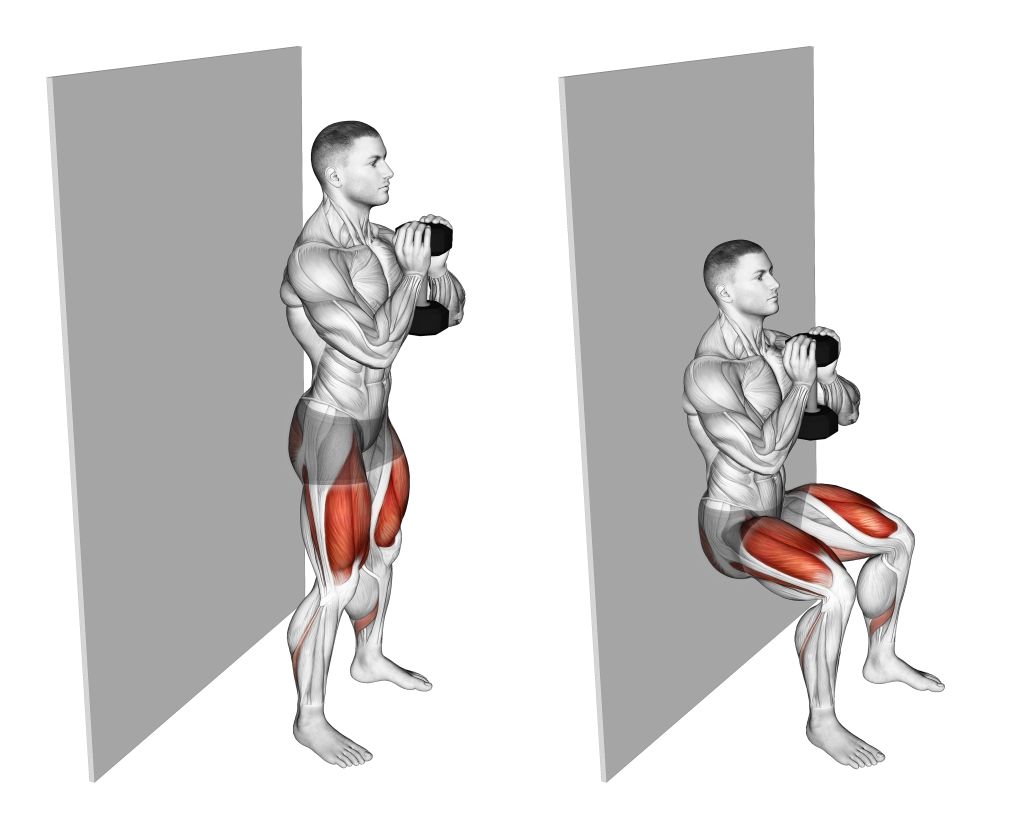
Continuing to grip the weights in this manner, the exerciser will then squat backwards until their glutes and lower back are flat against the wall, knees bent and feet set approximately shoulder-width apart.
Hold this position - taking care to keep the torso as vertical as possible - for the pre-specified length of time.
6. The Stability Ball Wall Sit
A somewhat complex wall sit variation that has the exerciser set a stability ball between their back and the wall; stability ball wall sits are primarily done in order to maximize stability demands from the core and legs.
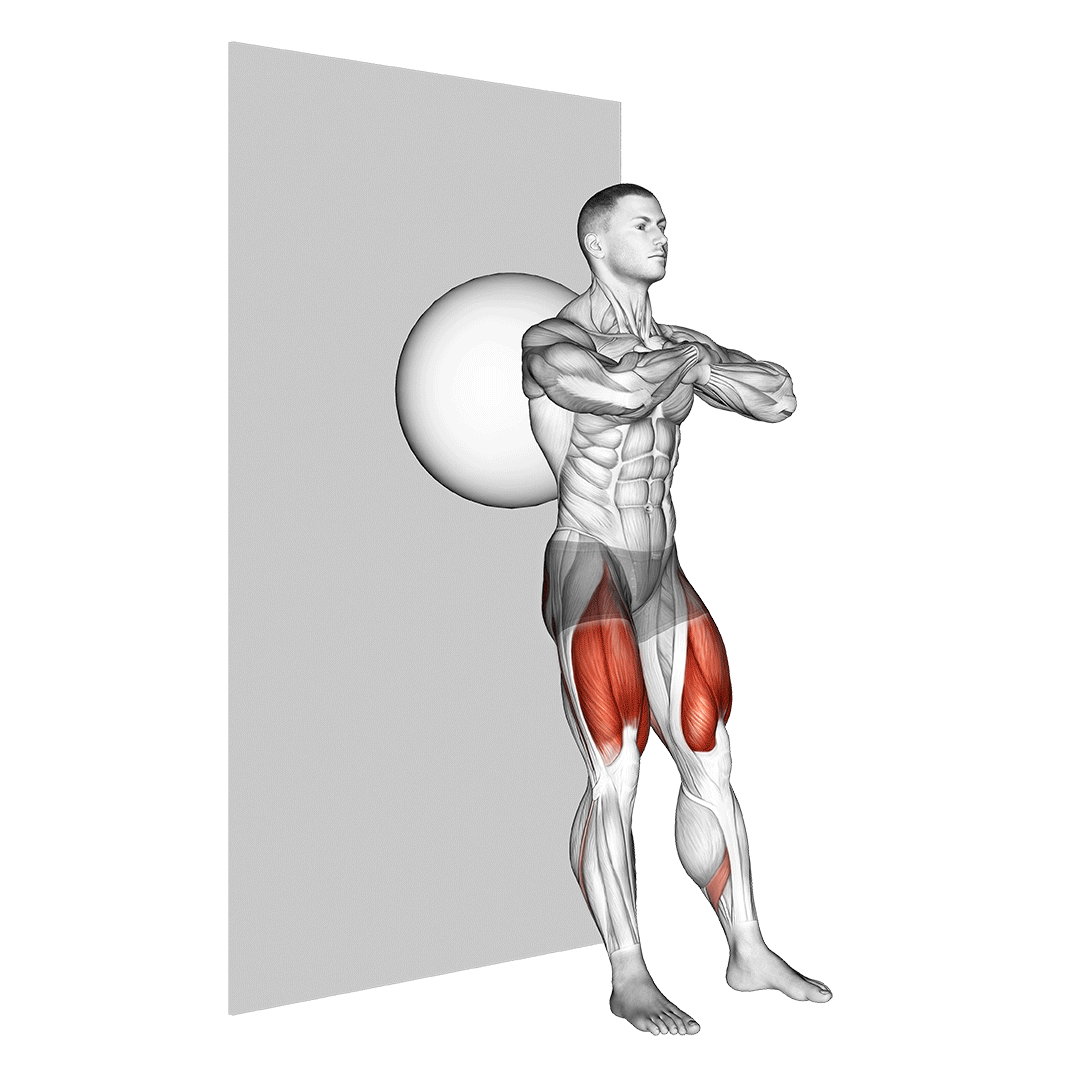
Because of the complexity in suspending a large ball between the back and a wall, stability ball wall sits are more often used as an alternative to weighted wall sits once an athlete has progressed beyond regular wall sit effectiveness.
Leg Muscles Worked
Stability ball wall sits work the exact same muscles as regular wall sits, only to a greater intensity. The quadriceps, glutes, hamstrings and core are all targeted in an identical manner.
Benefits as a Wall Sit Variation
Performing wall sits with a stability ball enhances the level to which the muscles are contracted.
Because all wall sit variations are isometric exercises, making the movement more unstable by removing a source of stability (the wall itself) causes the muscles to work harder in order to keep the body in a sitting position.
How-to:
To perform a stability ball wall sit, the exerciser will hoist a ball over their head and pin it against a wall behind their back. The ball should be positioned high on the back so it remains in place as the exerciser squats down.
Once in a squatting position, the exerciser braces their core and pulls their navel towards their back, pressing against the stability ball. They then hold this position for as long as necessary, adjusting their stance as needed.
Which Wall Sit Variation is the Best?
With the sheer number of wall sit variations presented to you in this article, deciding on the right one can be difficult.
Fortunately, deciding on the right type of wall sit is somewhat less important than picking between heavier and more dynamic exercise variations. We advise trying out all the variations of wall sit you can find and simply selecting whichever one is most comfortable for you.
Although certain variations are somewhat more intense or emphasize certain muscle groups more, the majority of wall sit variations are nearly identical and all serve much the same purpose. Unless you have a highly specific goal in mind, just choose one that fits your physiology well.
References
1. Cho M. The effects of modified wall squat exercises on average adults' deep abdominal muscle thickness and lumbar stability. J Phys Ther Sci. 2013 Jun;25(6):689-92. doi: 10.1589/jpts.25.689. Epub 2013 Jul 23. PMID: 24259831; PMCID: PMC3804993.
2. Drake, D., Kennedy, R. & Wallace, E. The Validity and Responsiveness of Isometric Lower Body Multi-Joint Tests of Muscular Strength: a Systematic Review. Sports Med - Open 3, 23 (2017). https://doi.org/10.1186/s40798-017-0091-2
